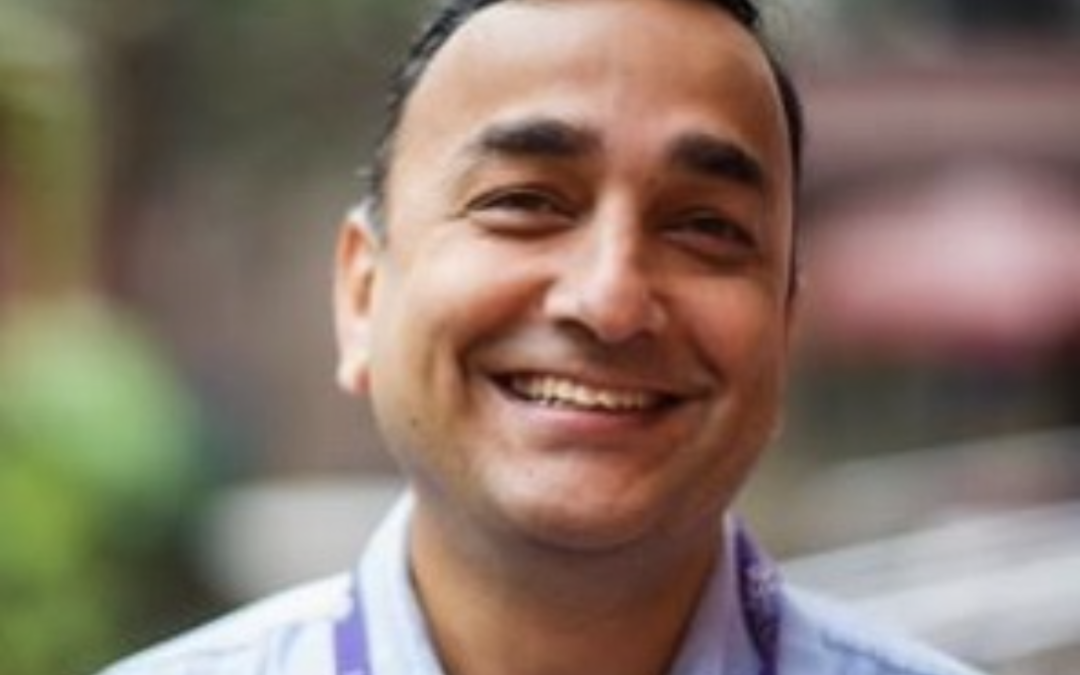Dr Umang Mathur
Eyesight International (ESI) Fellow
Cornea-Anterior Segment, LVPEI
January 1997- January 1998
Post Fellowship:
Joined Dr Shroff’s Charity Eye Hospital (SCEH) in 1998.
Current Role:
Executive Director
Dr Shroff’s Charity Eye Hospital
New Delhi, India
www.sceh.net
It may sound clichéd, but my time as an Eyesight International (ESI) Fellow at LVPEI in 1997 was life changing. Fresh and disillusioned from my residency training, my fire of idealism of ‘service’ and why I chose to become a doctor was all but extinguished. I was poorly trained with no skills or confidence to practice as an ophthalmologist. Wait-listed two times in the fellowship interview, I was fortunate to get the coveted seat due to a dropout of a selected candidate. This was a turning point in my professional career.
The one-year rigorous Fellowship at LVPEI had a balanced mix of academics, modern diagnostics, supervised and independent surgery and clinical research. The fellowship was mentored by inspiring faculty of LVPEI and international visiting faculty. The intensive and well- structured fellowship program made me a confident corneal surgeon, ready to practice as a specialist.
Dr Shroff’s Charity Eye Hospital (SCEH), New Delhi, set up in the 1920s, once a popular eye hospital of north India, had been in a state of neglect for nearly three decades. An industrial group, Eicher, had committed to support the hospital financially and administratively. The imposing red-brick imperial building in arguably the busiest part of the country, offered an interesting opportunity to practice my newly acquired skills. I joined SCEH during the monsoons of 1998, just when the hospital was trying to rediscover itself. The hospital had no semblance of sub-specialty care or even modern cataract surgery with phacoemulsification; no eye bank, that meant no corneal tissue; a meagre 750 annual surgeries, and true to its name, dependent near 100% on charity for sustenance.
The ESI Fellowship at LVPEI was wholesome in show casing a model of equitable eye care with a focus on excellence. Armed with the fellowship experience and with supportive leadership, we set up the cornea service with microbiology at SCEH, I personally trained optometrists in work-up and contact lenses.
I negotiated with the local bureaucracy to set up our Eye Bank in 2005. From 25 cornea retrievals in the first year, SCEH Eye Bank has become one of the largest in north India with more than 1500 annual corneal transplants. SCEH network sees over 500,000 patients annually and performs >40,000 sight restoration surgeries today.
The ripple effect of the ESI fellowship is most evident from the fact that I have been able to pass on the training to over 50 short- and long-term corneal fellows and over 250 comprehensive ophthalmology fellows, who are making a difference to corneal blindness in the communities they practice.
I have been most fortunate to have had continued mentorship from Dr GN Rao, all through my career. The fellowship gave me the skills to be a capable corneal specialist, but more importantly gave me vision to contribute to society. I am grateful for being provided the opportunity to be an ESI Fellow.
